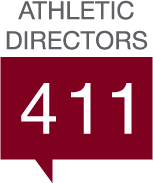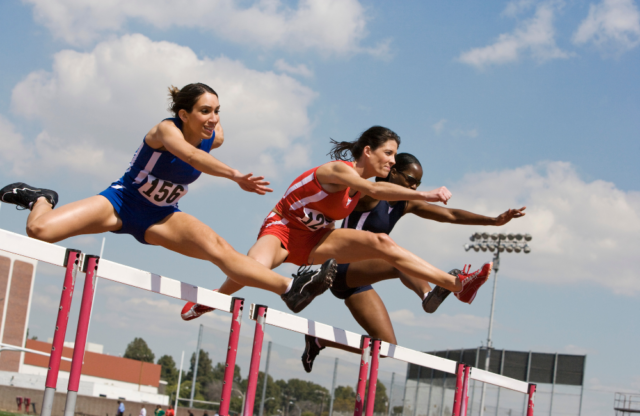This February 5th marks National Girls and Women in Sports Day (NGWSD) — a time to celebrate the achievements of female athletes, recognize the barriers they continue to face and advocate for a more equitable future in sports. From youth leagues to professional arenas, girls and women have fought for visibility, resources and respect in athletics, and while progress has been made, disparities in pay, representation and research remain significant hurdles.
As athletic directors, NGWSD is more than a holiday—it’s a call to action. Ensuring fair opportunities, increasing support for women’s programs, and investing in research to better understand female athletes are critical steps toward gender equity. Change doesn’t just happen at the professional level—it starts in schools, colleges and communities, with leaders like you shaping the athletic experience for the next generation.
Disparities of Women and Girls in Sports
Times are changing. Women in sports are in the spotlight now, more than ever, after the impressive rise to fame of athletes like Caitlyn Clark, Ilona Maher and Simone Biles. But despite the progress we’ve seen, there’s still a lot of work to do.
Pay and Financial Disparities
The 2024 Paris Olympics were a historic milestone for gender equity, marking the first time that U.S. Olympic athletes—both men and women—received equal pay and benefits under the Equal Pay for Team USA law. However, this level of fairness is the exception, not the rule.
- Among elite athletes, women earn only 1% of what men earn.
- In 2024, the minimum WNBA salary was $64,000, while the NBA minimum salary exceeded $1 million.
- Collegiate NIL (Name, Image, Likeness) collectives overwhelmingly favor male athletes, with women receiving just 34% of NIL funding.
Representation and Opportunities
Despite Title IX, many institutions still fail to provide equal opportunities for female athletes.
- A U.S. General Accounting Office (GAO) report found that 93% of colleges do not offer women proportional opportunities to compete in sports.
- At the high school level, 7% more boys participate in team sports than girls—a gap that widens to 22% in younger age groups.
- Leadership remains male-dominated:
- Only 36% of sport supervisors in FBS athletic departments are women.
- Just 11.7% of FBS athletic departments are led by women.
Lack of Research in Women’s Sports
One of the most overlooked disparities is the lack of research on female athletes.
- Out of 5,200+ studies published in six major sports science journals between 2014 and 2020, only 6% focused exclusively on women.
- Women’s bodies are not simply smaller, weaker versions of men’s—they have different hormonal cycles, bone structures, muscle mass compositions, and injury risks.
- The lack of research leads to misinformed training protocols, injury prevention strategies, and medical treatments for female athletes.
These disparities create an exhausting uphill battle—one where women train just as hard as their male counterparts but receive a fraction of the funding, research, and recognition.
Ways to Celebrate and What Athletic Directors Can Do
There are countless ways for you and your athletic program to get involved! Whether through events, education or direct action, this is an opportunity to your celebrate female athletes while addressing the challenges they face.
- Host a NGWSD event: Organize a special event at your school or within your community. This could be a panel discussion with female athletes and coaches, a skills clinic for young girls or a recognition ceremony honoring your school’s female sports teams.
- Advocate for equity in your program: Review your athletic department’s policies on funding, facilities and media coverage. Are female teams receiving the same resources and visibility as their male counterparts? If not, this is the time to push for change.
- Encourage female leadership in sports: Support young women in pursuing coaching and athletic administration roles. Consider mentoring female student-athletes who are interested in sports management or creating internship opportunities within your department.
- Spread awareness on social media: Highlight the accomplishments of female athletes in your program and beyond. Use #NGWSD to join the national conversation and share inspiring stories that uplift women in sports.
- Engage your athletes and coaches (and you!): Lead discussions with your teams about the importance of NGWSD, Title IX and gender equality in sports. Bringing awareness to these issues fosters a culture of inclusion and advocacy.
- Emphasize support: Women’s teams often have smaller audiences than men’s. Encourage attendance at women’s games, promote their events, and make a point to stop by women’s practices to show your support.
Additionally, many NGWSD events are happening nationwide, so be sure to check out the Women’s Sports Foundation’s event map to locate a celebration near you. Your participation—big or small—can make a meaningful difference in advancing gender equity in sports.




